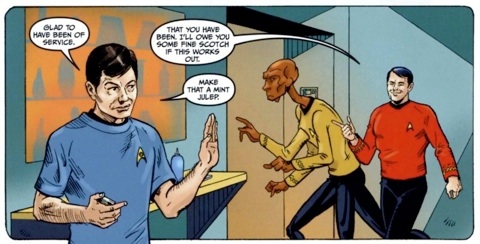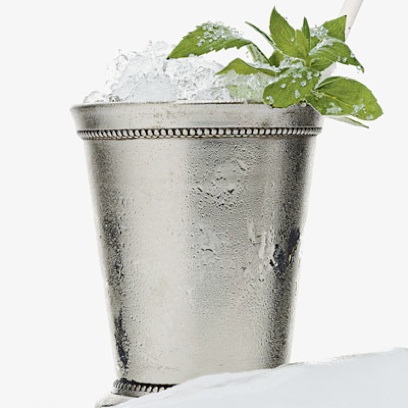Numerology

One Mint Julep
I came across free tablature for this piece, saw that it was arranged by Chet Atkins, and thought my dad would like that. It was also about a cocktail, so I liked that (I briefly toyed with the idea of doing a whole collection of drinking songs, but then thought better of it). Only later did I discover that this song is, in some ways, a historically important piece.
“One Mint Julep” is one of the first rock and roll songs to get real traction (as performed by The Clovers), and it was basically the first novelty drinking song. It was written by Rudy Toombs, who wrote a bunch of the foundational rhythm and blues numbers (and who, speaking of novelty drinking songs, would go on to pen “One Scotch, One Bourbon, One Beer” a few years later) before he was murdered in Harlem.
This song helped The Clovers move away from sentimental doo-wop numbers and into rhythm-and-blues and nascent rock-and-roll. The song is the ironic reflection of a man who is recalling how he met a woman on the street and got her to come back to his apartment for a drink (the titular mint julep); the next the thing he knows, her father bursts through the door and threatens to kill them if they don’t get married immediately. The narrator now finds himself burdened with a wife and “six extra children from a-gettin’ frisky”—and the whole thing can be blamed on a single mint julep, the mint julep that impaired their judgment and led them to go all the way.
Wikipedia states the “humor in this song comes in part from the idea of a young black man getting drunk on mint juleps, thought of as an aristocratic southern white woman's drink.” I have my doubts about this interpretation—nothing in the song’s lyrics suggests that there is anything odd, unmanly or racially atypical about them drinking a mint julep or that there’s anything funny about the drink; the humor emerges primarily from the idea that just one drink (the lyrics clearly suggest that he thought he had more alcohol at home, but only had enough for a single mint julep) could lead to such massive consequences: a shotgun wedding and six children. How odd that Wikipedia says “drunk on mint juleps” when the whole point of the lyrics is that there was only “one mint julep” (one mint julep / was the cause of it all). Lastly, the mint julep is indeed associated with Southern aristocracy—but a woman’s drink? Really? You know who drinks mint juleps?

That’s who. A Google image search for “mint julep drinker” has men outnumbering women about 3:1. (with at least one African American, Wyatt Cenac, who doesn’t seem to think that there’s anything racial, one way or the other, about mint juleps). There’s also this southern gentleman, who prefers mint juleps to scotch:

In any case, “One Mint Julep” is an odd success story—it’s been a major hit many times, but mostly as an instrumental, particularly the 1961 Ray Charles version. Chet Atkins’ recording was also an instrumental—my sheet music omitted the chromatically descending bridge (C# to C to B to A#), since Atkins doesn’t play in that section (although it does, of course, appear in his version of the song, along with a saxophone solo, which “Mint Julep” helped make a standard part of the repertoire of early rock and roll), but I’ve added it back in with a special Easter Egg for my brother hidden in the bass line. Whenever I hear a chromatic shift from C# to C, I just… I just can’t help myself.
Monday, October 28, 2013
